When meal planning for an overnight backpacking trip, it can be challenging to balance the need for nutrition and convenience, while also minimizing weight in your pack. This guide highlights the best backpacking food ideas to fuel a strenuous day on the trail, without sacrificing taste or enjoyment.
We’ve also included a downloadable sample meal plan to help you prepare for your days on the trail.
Jump to:
- Backpacking Food Ideas: Overview
- Backpacking Food Ideas: Breakfast
- Backpacking Food Ideas: Lunch
- Backpacking Food Ideas: Dinner
- Backpacking Food Ideas: Snacks
Backpacking Food Ideas: Overview
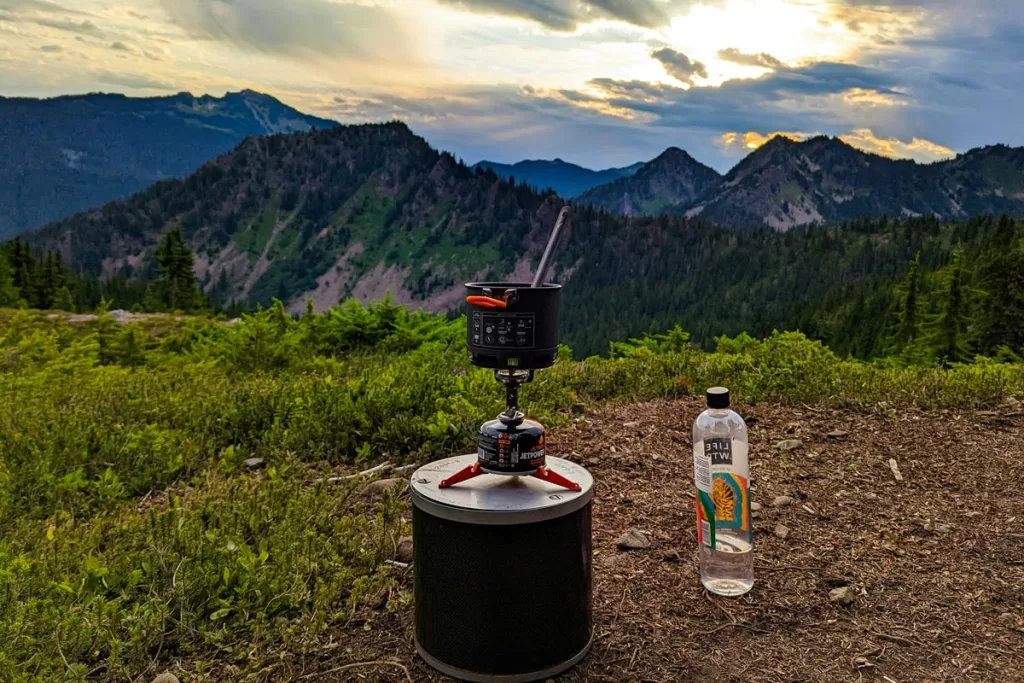
Proper meal planning is crucial for an overnight backpacking trip.
The average backpack trip is a strenuous activity with significant calorie depletion. A 150 lb. adult shouldering a 25-lb. pack can easily burn 2,000 – 2,500 calories per day, especially with elevation gain.
Factor in your normal resting calorie needs, and that’s a lot of food you need to consume on the trail each day, to replenish your reserves and fuel the day ahead.
While at the same time, food weight quickly adds up, and as with the larger cardinal rule of backpacking, you want to minimize weight wherever possible.
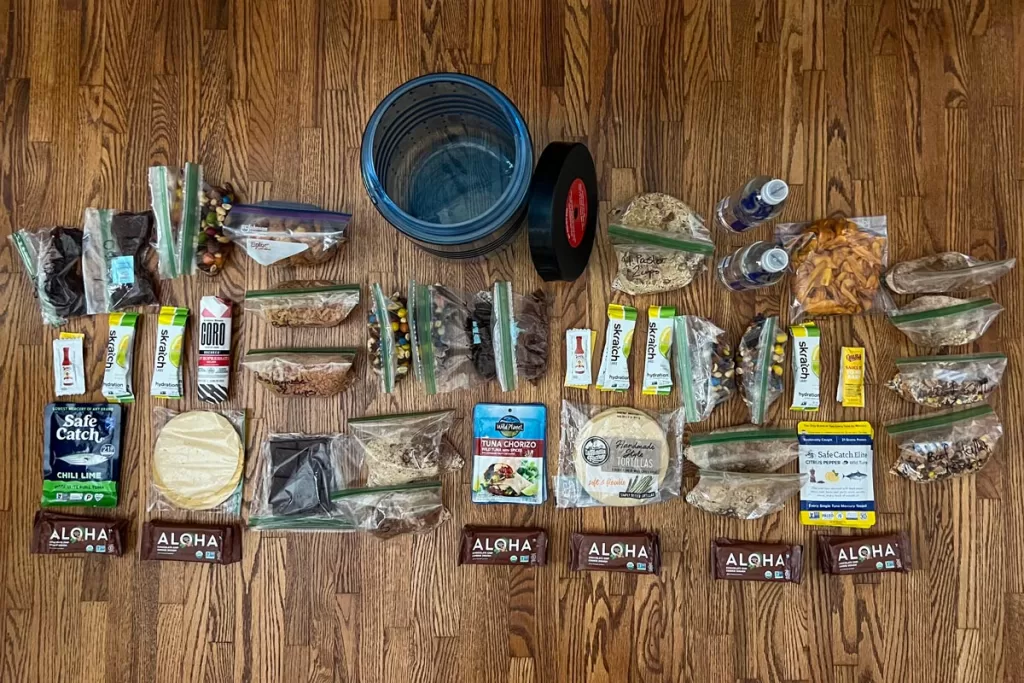
When building a backpacking meal plan, opt for the densest calories per food size and weight. A good benchmark is 120-130 calories per ounce of food.
For example, a bagel has the same number of calories as a protein bar, but the latter takes up a lot less room in your pack.
How many calories do I need to eat each day? There are numerous equations of varying complexity, to calculate your backpacking calorie needs. However, a simplified calculation is: your body weight (in lbs.) x 25 = calories needed per day. For example, a 150 lb. individual x 25 = needs 3,750 calories each day.
Calculated another way, you should aim to carry between 1.5 – 2.5 lbs. of food per day, depending on your size and how strenuous your route will be.
Note: You’ll most likely have extra food, as the inevitable heat of a summer backpacking trip often zaps your appetite. However, having extra food obviously beats the alternative.
In each of the sections below, we spotlight some of the best foods we’ve found for each meal, optimizing caloric intake to maximize the nutrients your body will crave, while minimizing weight.
Backpacking Food Ideas: Breakfast
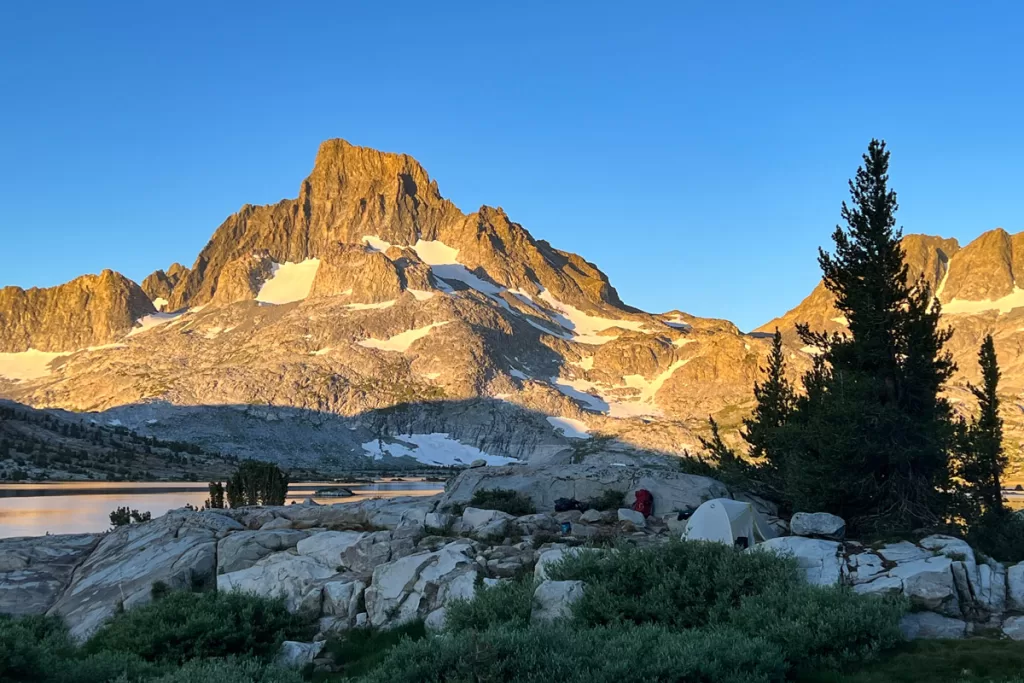
Breakfast is crucial, to fuel the long day ahead.
You’ll want to nourish your body with a mix of carbs, healthy fats, and filling protein. You’ll also want to plan foods with minimal preparation time, as it’s imperative to hit the trail early, and get ahead of the day’s heat.
We’ve found that with a little dress up, quick oats satisfy all these parameters. Ahead of any backpacking trip, we prep pre-measured Ziploc bags (1 per day) filled with quick oats and a range of mix-ins.
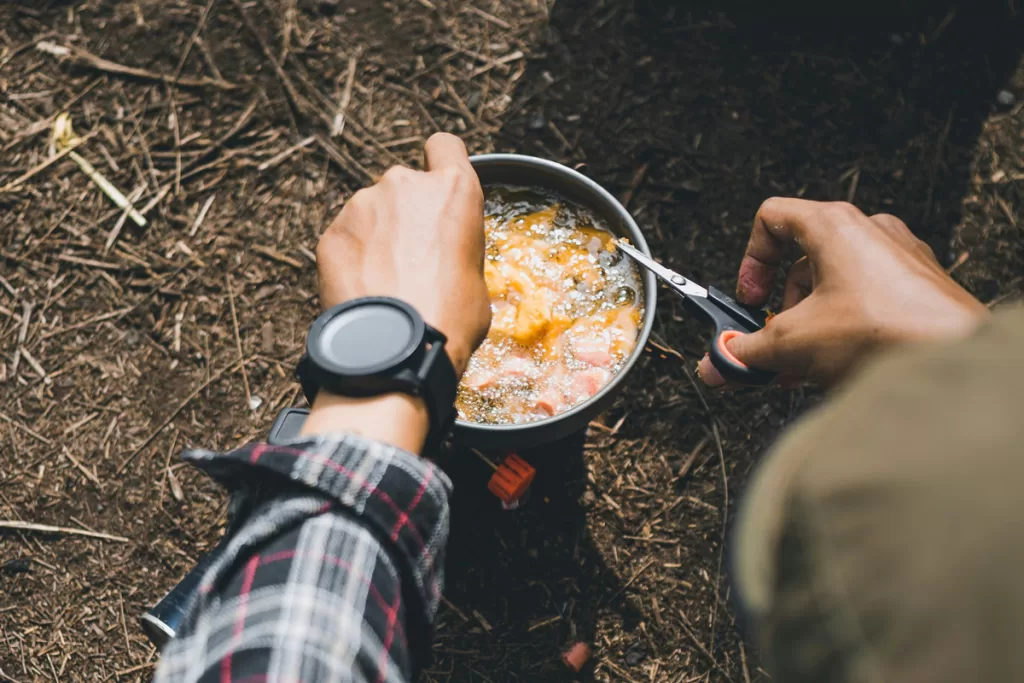
Customize mix-ins as you like. We blend our oats with ground almonds, protein powder, chia seeds, flax seeds, hemp seeds, and cinnamon.
Each morning, simply pour your pre-measured Ziploc into a bowl, stir in hot water (1 cup water for ½ cup oats), and eat.
You’ll also want to kickstart the day with a hydrating electrolyte packet. We personally like SkratchLabs, as we’ve found the brand has slightly less additives than others.
Electrolyte Tip: bring an empty plastic water bottle, which adds virtually zero weight to your pack, but makes electrolytes super easy to consume. When you’re ready to drink, simply fill the bottle halfway with filtered water, pour in the electrolyte packet, and shake.
Lastly, coffee drinkers may want to bring instant coffee packets for a morning jolt.
We’ve tried many brands of instant coffee, but have yet to find one that is actually good. While we love coffee at home, we just skip it during backpacking trips. Others may disagree, however, and it’s not much added space to carry packets and heat water to mix.
Sample Breakfast:
• ½ cup quick oats
• Oat mix-ins: 1 tsp cinnamon, 2 TBSP ground almonds, and 1 TBSP each of chia seeds, hemp seeds, flax seeds, and protein powder (vanilla or unflavored)
• Electrolyte packet
• Coffee packet
Backpacking Food Ideas: Lunch
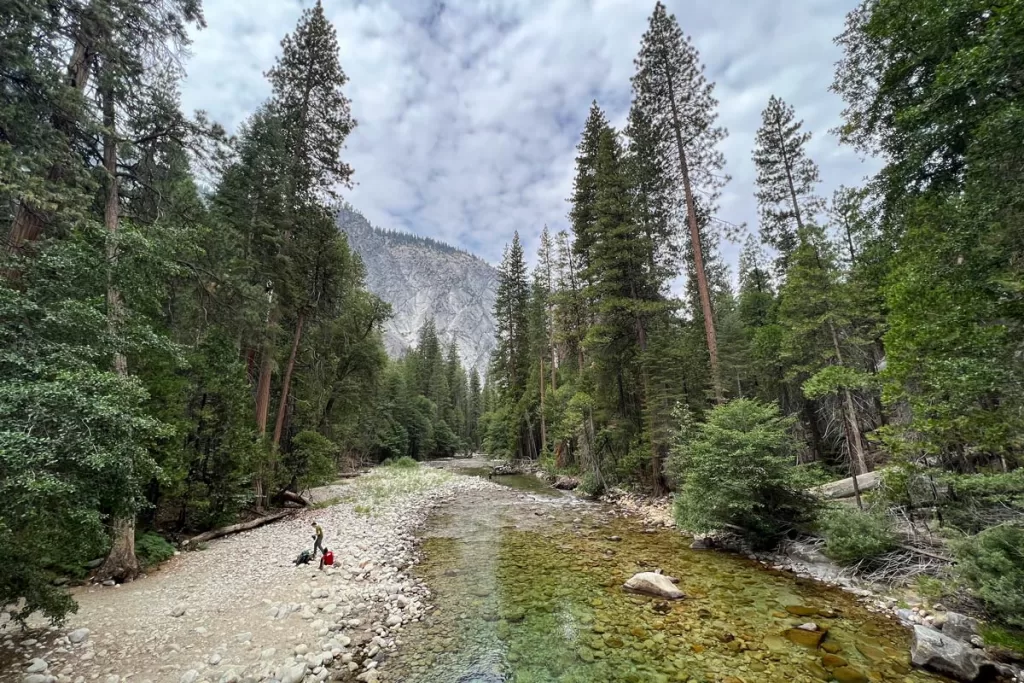
Lunch will be your most boring meal of the day. The goal is to assemble a quick bite, without too much lost time on the trail.
You’ll also want to minimize bulk and weight (which nixes sandwiches, the classic trail lunch).
We typically construct wraps with tortillas or pita bread and a vacuum-sealed protein, for an easy lunch that still provides ample protein and carbs.
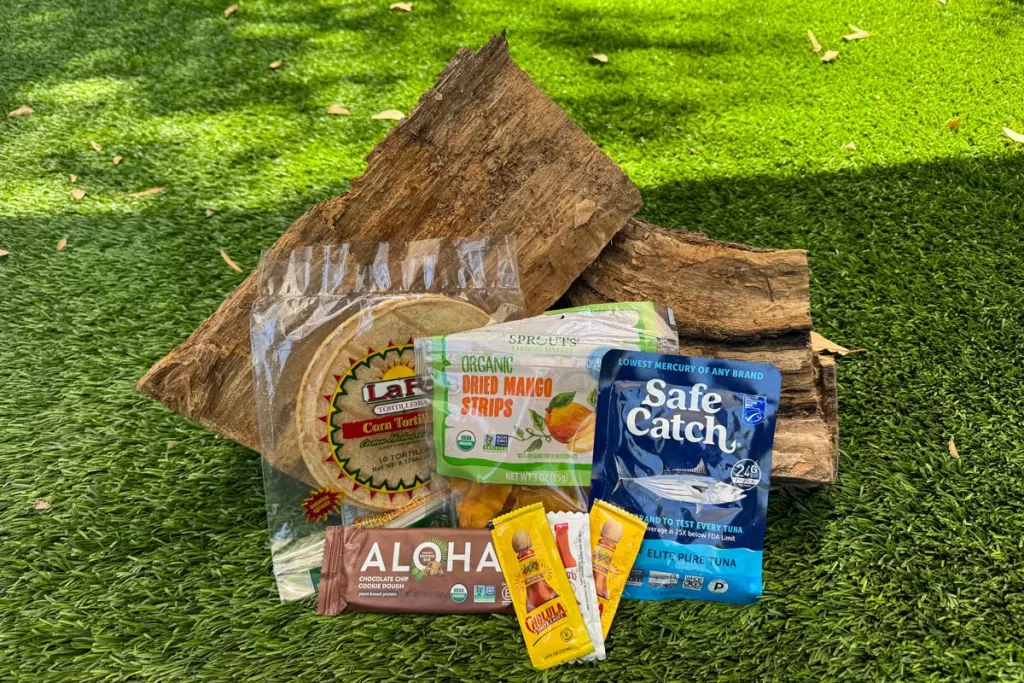
For protein, we like Safe Catch brand tuna or salmon for its organic, sustainability ratings and variety of flavor offerings. You can also bring mini packets of hot sauce or other condiments as a further flavor boost.
Otherwise, those who don’t like fish can consider vacuum-sealed Starkist chicken packets or non-refrigerated chorizo and snack cheese (like Babybel).
To round out your lunch, supplement with some of your daily snack allotment (see below), such as a protein bar or dried fruit.
Sample Lunch:
• Safe Catch tuna packet
• (2) tortillas
• Condiment packets (hot sauce, mayo, etc.)
• Snacks
Backpacking Food Ideas: Dinner
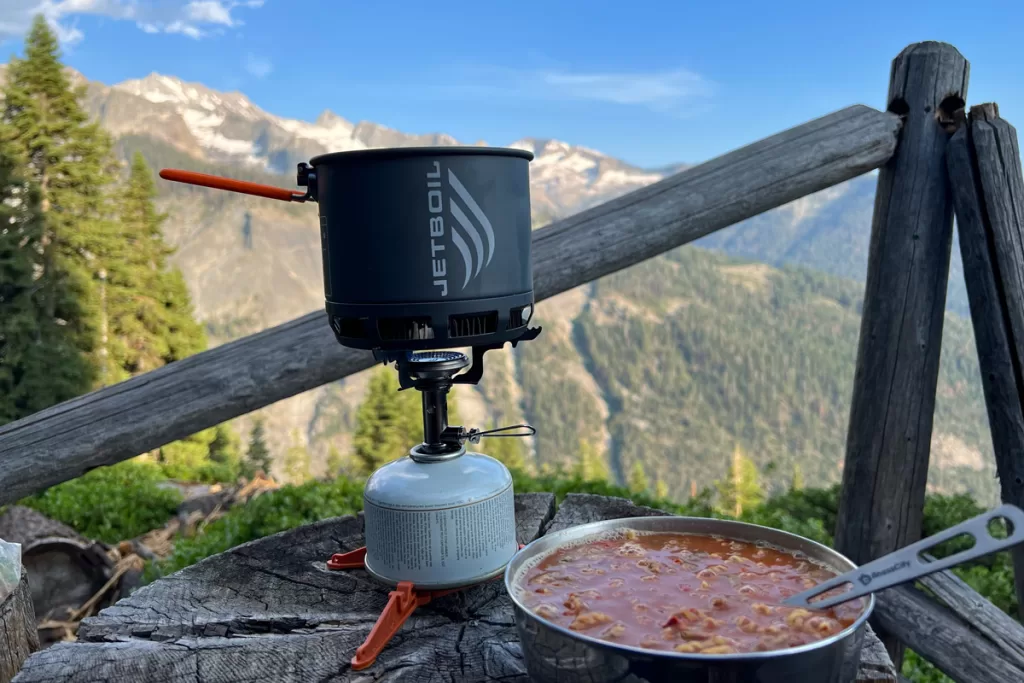
Come evening, we strongly recommend taking a shortcut with a pre-packaged backpacking meal.
After a long day on the trail and setting up camp, the last thing you’ll feel like doing is prepping dinner, and these prepared meals are a godsend.
Backpacking meals consist of dehydrated ready-made dinners, ranging from pastas and skillets, to curries and stews. For every dish, simply boil water and stir.
We caution, though, that backpacking meals are frequently loaded with sodium. Luckily, you’ve sweated out a lot of salt today and can afford a higher amount with your meal, but those with sodium sensitivities should still be mindful.
(We’ve found that one backpacking meal package is often enough food for two people, which can also cut the sodium intake in half.)
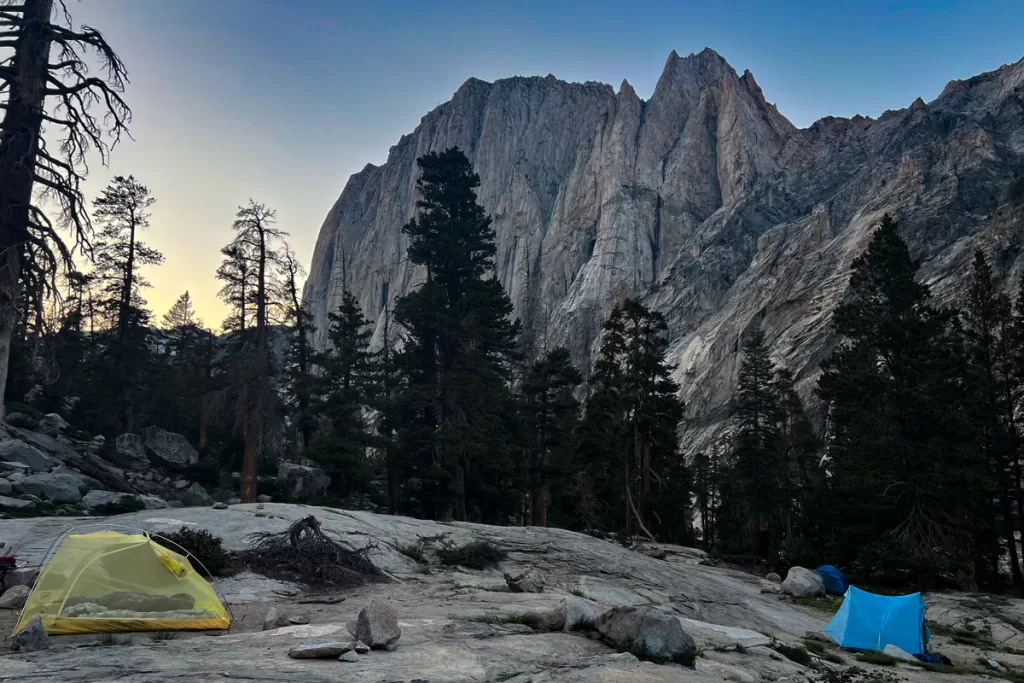
There are numerous backpacking meal brands on the market. We’ve come to prefer Alpine Aire for slightly less processing than others – signified by its 5-year shelf life, compared to the 30-years that is common among other brands.
In addition to your dinner, you’ll also want to rehydrate with a second electrolyte packet to replenish what you lost today.
Lastly, don’t forget dessert – a few squares of dark chocolate are a well-deserved treat to enjoy under the stars.
Sample Dinner:
• Backpacking meal (1 meal per 2 people)
• Electrolyte packet
• Dark chocolate (2 squares each night)
Backpacking Food Ideas: Snacks
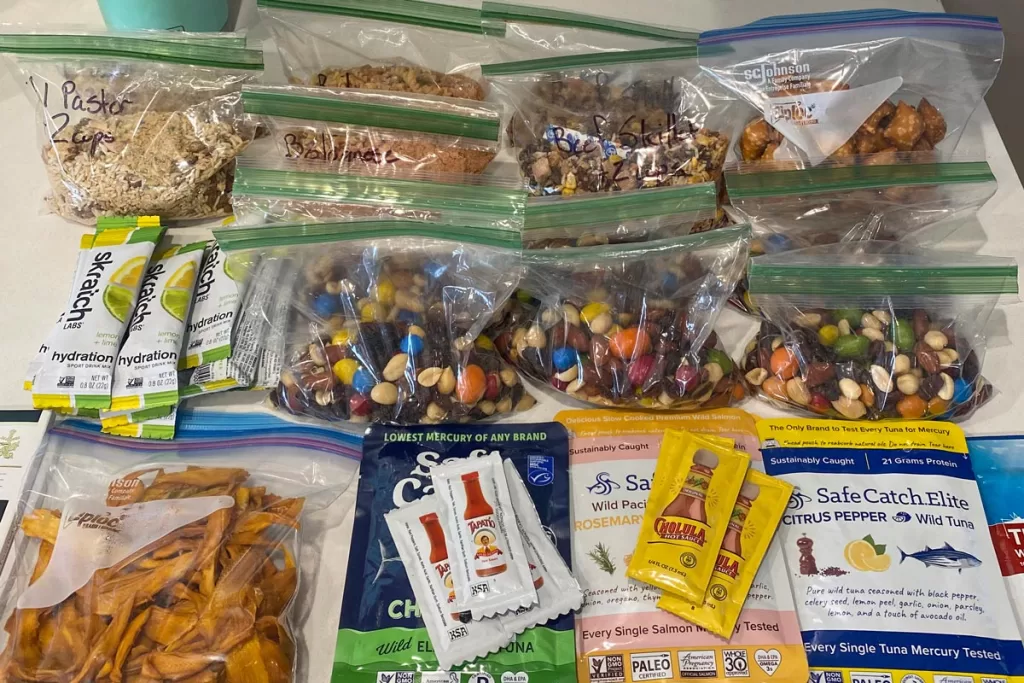
Snacks play a key role in providing nutrients and fuel throughout the day. As with the rest of your meal plan, you’ll also want to maximize caloric density per size and weight of your snacks.
With that in mind, some of our preferred trail snacks include:
- Protein bars (we love Aloha Bars – their ingredients are “cleaner” than most other brands)
- Trail mix
- Jerky
- Dried fruit (mango is a personal favorite)
- Nuts
- Hard cheese
- Meat sticks
- Justin’s peanut butter or almond butter packets
When planning out snacks, we begin by packing the foods above. If we have leftover space and weight in our packs, we’ll toss in a few less “efficient” (either spatially or nutritionally) guilty-pleasure treats – perhaps peanut butter pretzels, candy, or other packaged goodies.
Sample Snacks (quantities per day):
• Trail mix (1 cup)
• Protein bars (2)
• Jerky (1/3 bag)
• Dried fruit (1/4 cup, or approximately 1 handful)
What are your favorite trail meals or snacks? Let us know in the comments below.
And if you need more backpack planning tips, check out our backpacking packing list – complete with downloadable PDF checklist.
